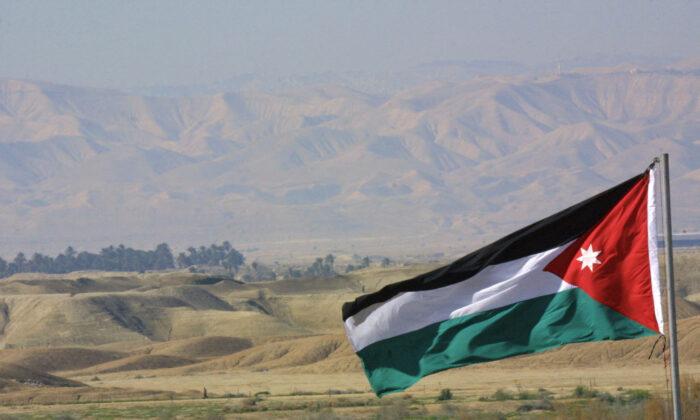Israel says it is striking “military infrastructure” in Lebanon amid escalating cross-border violence between the Jewish state and the Hezbollah terrorist group.
“The Israeli Defense Forces struck Hezbollah military infrastructure in Lebanon in response to shooting yesterday toward Israeli territory,” Israel’s military said in an Oct. 16 social media post.
In a separate statement, Israel’s military said one of its officers was killed by “anti-tank fire” originating from Lebanese territory.
On Oct. 15, Hezbollah carried out a missile attack on the Israeli border town of Shtula, killing one resident, according to Israeli media reports.
Hezbollah later confirmed it had targeted an Israeli army barracks—and five other military sites—near the Lebanon–Israel border. According to Hezbollah, the attacks were a response to earlier Israeli strikes on southern Lebanon that killed an unspecified number of Lebanese civilians.
Israel is in the process of evacuating residents of towns located near the Lebanese border.
Israel has accused Iran, which is closely aligned with Hezbollah, of having ordered the cross-border attacks.

“Hezbollah carried out a number of shooting attacks ... under Iranian instruction and with [Iran’s] support,” Israeli army spokesman Daniel Hagari said on Oct. 16.
On Oct. 15, U.S. Secretary of State Antony Blinken said the naval deployments are intended to “send a clear message of deterrence.”
‘Devastating Consequences’
The latest round of Mideast violence began on Oct. 7, when the Gaza-based Hamas terrorists carried out a deadly cross-border raid into Israel. The attack, which appeared to take Israel completely off guard, left some 1,400 Israelis—soldiers and civilians—dead, according to Israeli sources.On Oct. 16, Mr. Hagari said a total of 199 Israelis had been taken hostage by Hamas, while 291 Israeli soldiers had been killed in the ongoing violence.
Iran, for its part, has praised the cross-border attack but insists it wasn’t involved.
In the 10 days since, Israeli warplanes have relentlessly pounded the Gaza Strip, which is home to some 2.3 million Palestinians. According to Gaza’s health ministry, upwards of 2,750 Palestinians have been killed—including hundreds of children—in the airstrikes.
Roughly 225 square miles in size, the Gaza Strip has remained under a crippling blockade by the Israeli and Egyptian authorities since 2007.

Following Hamas’s cross-border attack, Israel imposed a “complete siege” on Gaza, cutting supplies of food, water, fuel, and electricity into the beleaguered enclave.
With the stated aim of extirpating Hamas, Israel has amassed troops and tanks along the Gaza Strip’s borders in advance of an expected ground offensive.
On Oct. 13, Israel’s military gave residents of the northern Gaza Strip—roughly 1 million people—24 hours to relocate to the southern half of the territory.
On the same day, The Financial Times quoted an unnamed European Union official as saying, “We may be about to see massive ethnic cleansing.”
Hamas, which has governed Gaza since 2006, has urged residents to stay where they are, calling Israel’s ultimatum “psychological warfare.”
Ground Offensive Delayed: Report
On Oct. 14, The New York Times reported that Israel’s ground offensive—originally planned to take place over the weekend—had been postponed due to adverse “weather conditions,” citing comments from senior Israeli military officers.U.S. officials, meanwhile, have reportedly asked Israel to delay its offensive until a “humanitarian corridor” can be established to allow civilians to leave the besieged Gaza Strip.
The Rafah crossing, which links Gaza to Egypt’s Sinai Peninsula, is the only means in or out of the Palestinian territory.
On Oct. 16, Egyptian security sources said an agreement had been reached to open the Rafah crossing to let humanitarian aid into the enclave and allow foreign nationals to leave. Hamas officials, however, say there is “no truth” to reports that the crossing had been opened for humanitarian purposes.
That was later confirmed by Israeli Prime Minister Benjamin Netanyahu’s office, which said in a statement: “There is currently no truce and [no] humanitarian aid in Gaza in exchange for getting foreigners out.”
Last week, Israeli warplanes struck the Palestinian side of the Rafah crossing twice, severely damaging infrastructure and disrupting operations.
Meanwhile, U.N. Secretary-General António Guterres has warned that the region now stands “on the verge of the abyss.” On Oct. 16, he called on Israel to allow humanitarian aid into Gaza while also urging Hamas to release Israeli hostages “without conditions.”







